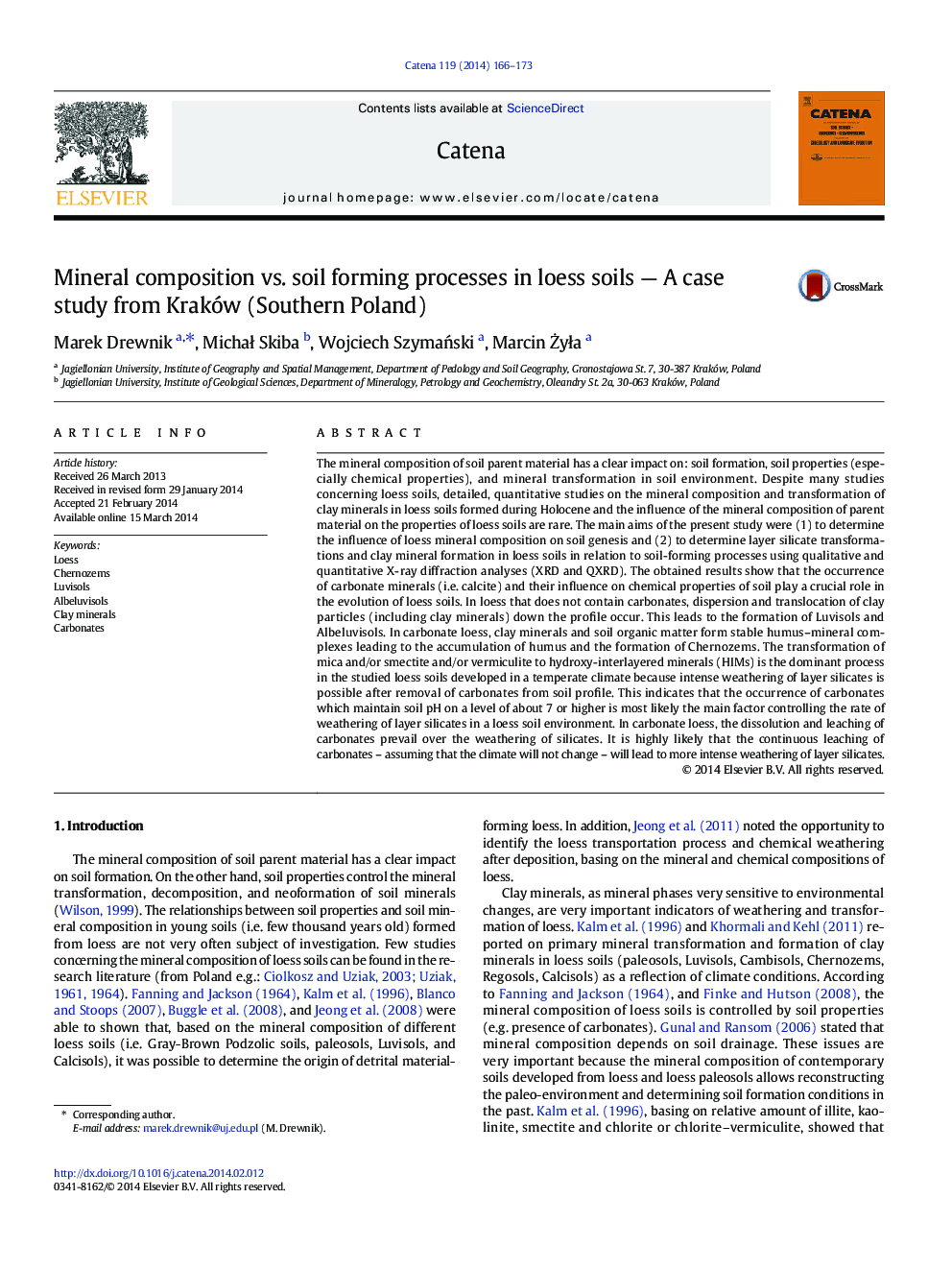| کد مقاله | کد نشریه | سال انتشار | مقاله انگلیسی | نسخه تمام متن |
|---|---|---|---|---|
| 4571458 | 1629233 | 2014 | 8 صفحه PDF | دانلود رایگان |

• Impact of mineral composition of loess on soil genesis was studied.
• Transformation of layer silicates to hydroxy-interlayered minerals (HIMs) prevails.
• Carbonates and high pH values are the main reasons for slowdown of mineral weathering.
• Intense weathering of layer silicates is possible after decalcification of loess.
The mineral composition of soil parent material has a clear impact on: soil formation, soil properties (especially chemical properties), and mineral transformation in soil environment. Despite many studies concerning loess soils, detailed, quantitative studies on the mineral composition and transformation of clay minerals in loess soils formed during Holocene and the influence of the mineral composition of parent material on the properties of loess soils are rare. The main aims of the present study were (1) to determine the influence of loess mineral composition on soil genesis and (2) to determine layer silicate transformations and clay mineral formation in loess soils in relation to soil-forming processes using qualitative and quantitative X-ray diffraction analyses (XRD and QXRD). The obtained results show that the occurrence of carbonate minerals (i.e. calcite) and their influence on chemical properties of soil play a crucial role in the evolution of loess soils. In loess that does not contain carbonates, dispersion and translocation of clay particles (including clay minerals) down the profile occur. This leads to the formation of Luvisols and Albeluvisols. In carbonate loess, clay minerals and soil organic matter form stable humus–mineral complexes leading to the accumulation of humus and the formation of Chernozems. The transformation of mica and/or smectite and/or vermiculite to hydroxy-interlayered minerals (HIMs) is the dominant process in the studied loess soils developed in a temperate climate because intense weathering of layer silicates is possible after removal of carbonates from soil profile. This indicates that the occurrence of carbonates which maintain soil pH on a level of about 7 or higher is most likely the main factor controlling the rate of weathering of layer silicates in a loess soil environment. In carbonate loess, the dissolution and leaching of carbonates prevail over the weathering of silicates. It is highly likely that the continuous leaching of carbonates – assuming that the climate will not change – will lead to more intense weathering of layer silicates.
Journal: CATENA - Volume 119, August 2014, Pages 166–173